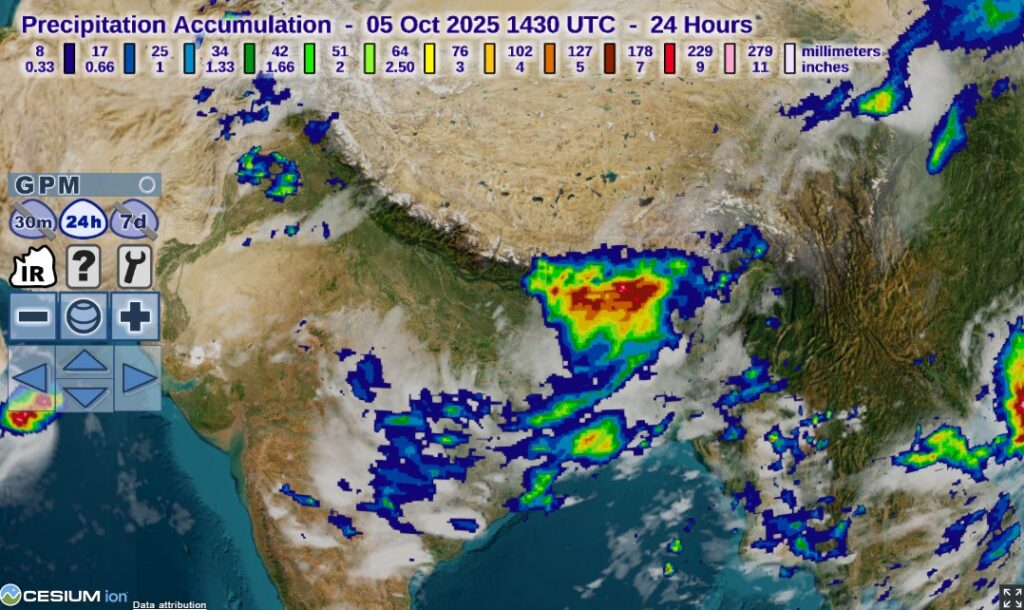

Very heavy rainfall across Nepal, NE. India and Bhutan has triggered landslides that have killed at least 60 people.
Over the last few days, parts of the Himalayas have been hit by very high levels of rainfall, causing large numbers of damaging landslides. The picture is not yet fully clear, but Nepal and Bhutan, and Darjeeling in India, have been particularly badly hit.
Over on the wonderful Save the Hills blog, Praful Rao has documented the rainfall at in Darjeeling – for example, on 4 October 2025 Kurseong recorded 393 mm of rainfall, whilst in Kalimpong a peak intensity of about 150 mm per hour was recorded. The scale of this event is well captured by the Global Precipitation Measurement dataset from NASA – this is 24 hour precipitation to 14:30 UTC on 5 October 2025:-

News reports from Nepal indicate that 47 people have been killed and more are missing. Of these fatalities, 37 are reported to have been the result of landslides in Ilam. The Kathmandu Post has started to document the events:-
“According to the District Administration Office, five people died in Suryodaya Municipality, six in Ilam Municipality, six in Sandakpur Rural Municipality, three in Mangsebung, eight in Maijogmai, eight in Deumai Municipality, and one in Phakphokthum Rural Municipality. Among the deceased are 17 men and 20 women, including eight children, the office said in its official report.”
The picture in NE India is also dire. In Darjeeling, a series of landslides have killed 23 people. These include 11 fatalities in Mirik and five in Nagrakata. Praful Rao has indicated that he will provide more detail on the landslides in Darjeeling on the Save the Hills blog in due course.
The rains have also caused extensive damage in Bhutan. At least five fatalities have been reported, mostly in “flash floods”. In this landscape, the term flash flood is usually used to describe channelised debris flows.
Of great concern is the reported situation at the Tala Hydroelectric Power Station dam on the Wangchu river in the Chukha district of Bhutan. Reports indicate that water has overflowed the structure due to a failure of the dam gates. According to Wikipedia, this dam is 92 metres tall, so a collapse would be a significant event. This is Bhutan’s largest hydropower facility, and dams are not usually designed to withstand a major overtopping event.
The situation across this region will be unclear for a while, but loyal readers will remember the late monsoon event in Nepal in 2024, in which over 200 people were killed. These events reflect changes in patterns of rainfall associated with anthropogenic climate change and changes in the pattern of vulnerability associated with poor development and construction activities. Neither are likely to improve in the next decade and beyond.
Text © 2023. The authors. CC BY-NC-ND 3.0
Except where otherwise noted, images are subject to copyright. Any reuse without express permission from the copyright owner is prohibited.







